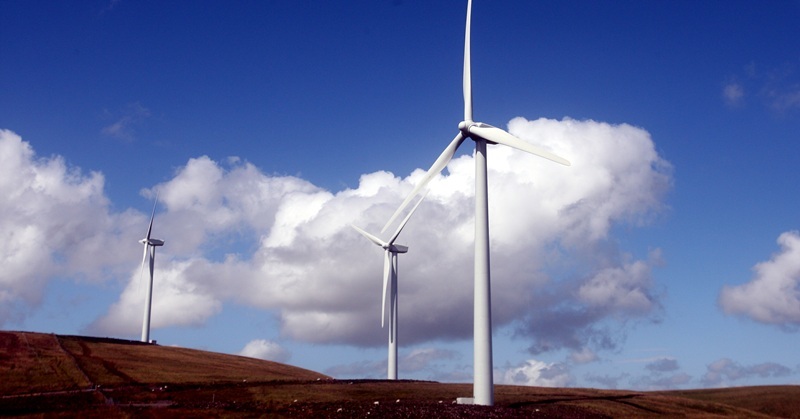More than 5000 ‘green’ jobs will be created by the development of Scotland”s offshore wind industry, First Minister Alex Salmond predicted.
His announcement came on the same day that UK energy secretary Chris Huhne gave a huge boost to the fledgling industry by announcing plans to speed up the connection of offshore wind farms to the National Grid making large scale wind energy projects more attractive to investors.
Speaking at the launch of the second stage of the National Renewables Infrastructure Plan (N-RIP), Mr Salmond said the development of three key sites in Scotland could support thousands of jobs and generate £300 million for the economy each year.
The report states that public and private investment of £223 million pounds could be used to help create 11 offshore wind turbine-manufacturing sites based in three regional clusters, supporting up to 5180 jobs between them.
Eleven sites have already been identified as ideal for development to support the offshore industry: Dundee, Methil Energy Park, Nigg, Hunterston, Aberdeen, Arnish, Campbeltown/Machrihanish, Ardersier, Kishorn and Peterhead.
The new report recommends these be combined into three regional sites to support the manufacture of offshore turbine components and exploit the subsea expertise that already exists in Scotland.
Mr Salmond said, “Scotland has the natural resources, expertise and ambition to become a global powerhouse for clean, green energy.
“The National Renewables Infrastructure Plan outlines the steps required to realise our ambition and to establish Scotland as a premier destination for the manufacture and installation of offshore renewable energy devices.
He said Scotland has the potential to become a “global powerhouse” in terms of renewable energy.
“This plan focuses on the sites that could provide investors with the high-quality infrastructure required for success in the rapidly growing green energy industry,” he said.
“The report states that a total investment of up to £223 million is required to realise the potential of these sites, which could create more than 5000 manufacturing jobs and generate around £300 million each year for Scotland’s economy.
“Our seas have unrivalled potential to generate clean energy and bring jobs and investment to our communities.
“Scotland’s waters are estimated to have as much as a quarter of Europe’s potential offshore wind and tidal energy resource and a tenth of the wave power capacity, and in the current economic climate it is important that we capitalise on these natural assets to secure new opportunities that support economic recovery and growth.
“Unlocking the potential of these sites requires initial investment from both the private and public sector.
“This report underlines the case for early investment and therefore it’s now urgent for the Treasury to release Scotland’s £185 million Fossil Fuel Levy to further develop the renewables industry.”
Scottish Enterprise chief executive Lena Wilson said the plan demonstrates the “huge economic” rewards of investment in the offshore wind industry.
“Scotland can be home to offshore renewable manufacturing in the same way as we are becoming home to the engineering design of offshore wind and wave tidal facilities,” she said.
“Taken together, these opportunities will help to secure Scotland’s place as Europe’s powerhouse of renewable energy production.”
The potential for offshore wind energy was underlined when the UK coalition government signalled its intention to bolster renewable energy production.
In his first annual energy statement to the House of Commons, Chris Huhne outlined 32 measures that will be introduced to tackle climate change and reduce the UK’s dependence on foreign energy sources.
These will include an increase in energy from renewable sources such as wind,
Mr Huhne said the government was laying out, “a clear strategy for creating the 21st century energy system that this country urgently needs for an affordable, secure, low-carbon future.”
This will include providing incentives for heat produced from renewable sources, and bring in emissions performance standards for power plants to make them cut their greenhouse gases.
Other steps announced by the coalition government aim to speed up connection of offshore wind farms to the grid, remove obstacles to private investment in new nuclear power and prop up the carbon price polluters have to pay for their emissions to encourage the development of low-carbon alternatives.
Scottish Renewables chief executive Niall Stuart said Mr Huhne’s announcement was good news for the offshore wind industry.
“Industry has been worried about the rules on offshore grid connections, which have threatened to hold up investment in offshore wind development due to costs and uncertainty over their delivery,” he said.
“The government has committed to look again at these rules, which should be a boost to the east and north-east of Scotland, both of which are ideally placed to capture the huge economic potential of offshore wind.”
